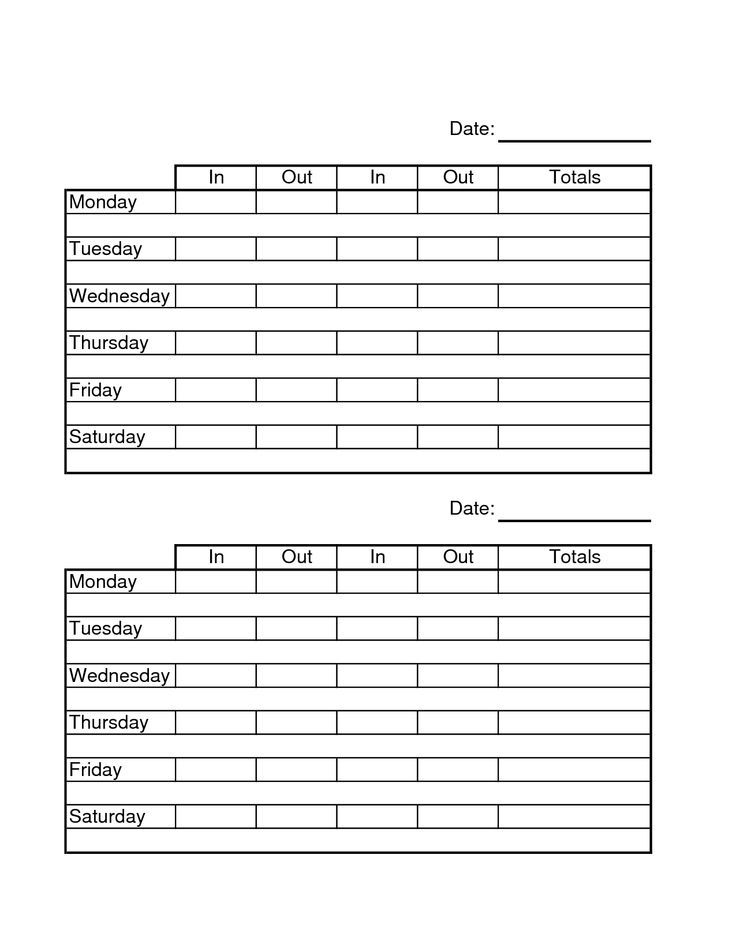If you’ve ever worked a job where you need to record your hours, you’re probably familiar with timesheets. But have you ever come across a 2-week timesheet? In this article, we’ll explore what exactly a 2-week timesheet is, how it works, and why it might be beneficial for both employers and employees. Whether you’re a business owner looking for an efficient way to track employee hours or an employee trying to stay organized, understanding 2-week timesheets can be incredibly helpful.
What is a 2 Week Timesheet?
A 2-week timesheet, also known as a biweekly timesheet, is a document used to record the number of hours an employee has worked over two weeks. It includes details such as the employee’s name, the start and end dates of the timesheet period, and columns for each day of the two-week period where the employee can record their hours worked.
Unlike a traditional timesheet that covers just one week, a 2-week timesheet allows employees to track their hours over a longer period. This can be particularly useful for businesses that pay their employees on a biweekly basis or have projects that span multiple weeks.
How Does a 2-Week Timesheet Work?
A 2-week timesheet typically consists of several columns where employees can record their hours worked each day. These columns may include fields for regular hours, overtime hours, and any other categories that are relevant to the employee’s job.
To use a 2-week timesheet, employees simply fill in the appropriate fields with the number of hours they worked each day. At the end of the two weeks, they total up their hours and submit the timesheet to their supervisor or the HR department for approval.
Employers can then use the information from the 2-week timesheets to calculate employee wages, track project costs, and ensure compliance with labor laws regarding overtime pay.
Benefits of Using a 2-Week Timesheet
There are several benefits to using a 2-week timesheet, both for employers and employees:
- Increased Efficiency: With a 2-week timesheet, employees only need to fill out and submit their timesheets once every two weeks, saving time and reducing paperwork.
- Better Accuracy: By tracking hours over a longer period, employees have a better chance of accurately recording their hours, reducing errors and discrepancies.
- Easier Payroll Processing: For employers, using a 2-week timesheet can streamline the payroll process by providing a clear and organized record of employee hours.
- Improved Project Management: If your business works on projects that last longer than a week, a 2-week timesheet can help you track and manage project costs more effectively.
- Compliance with Labor Laws: Some labor laws require employers to track and document employee hours for overtime calculations, and a 2-week timesheet can help ensure compliance.
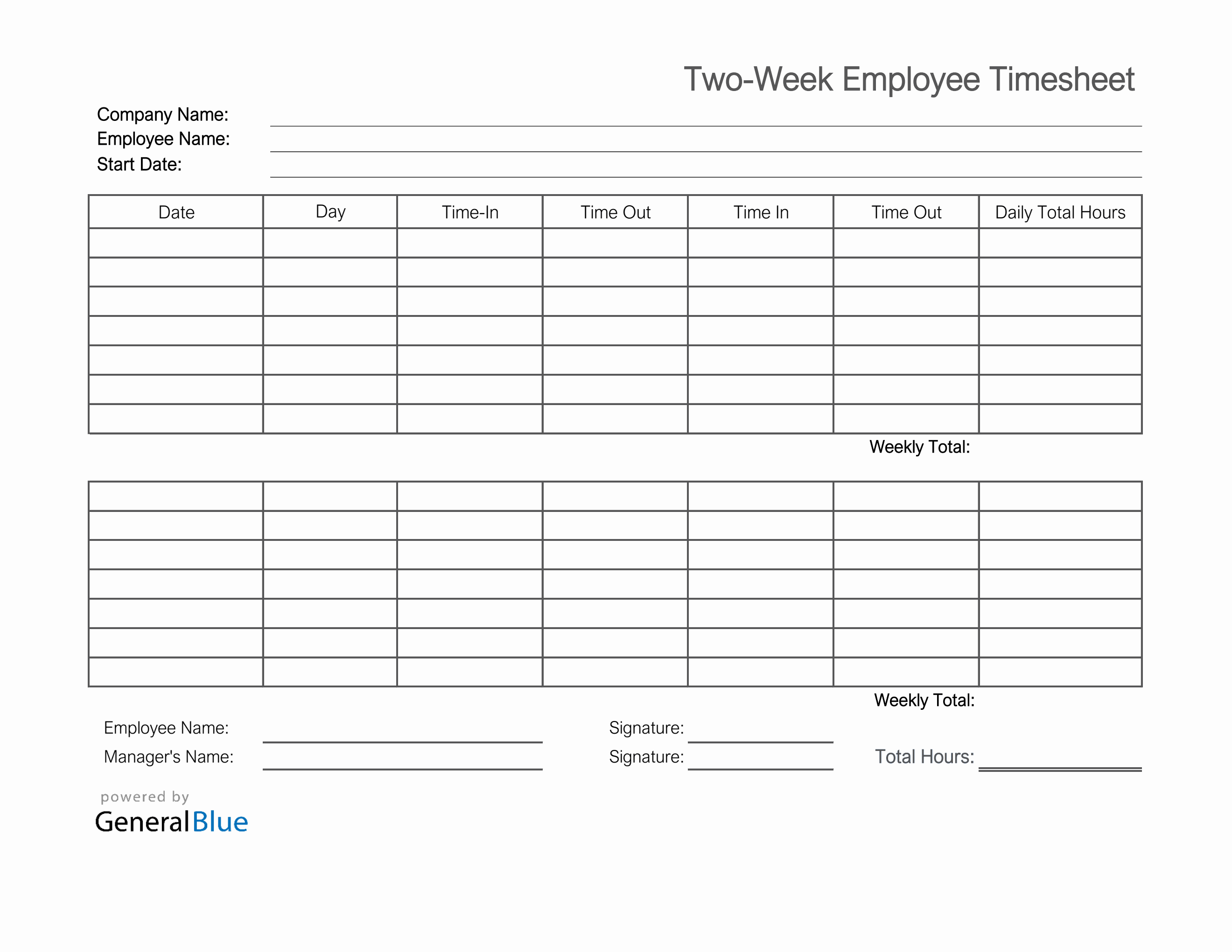
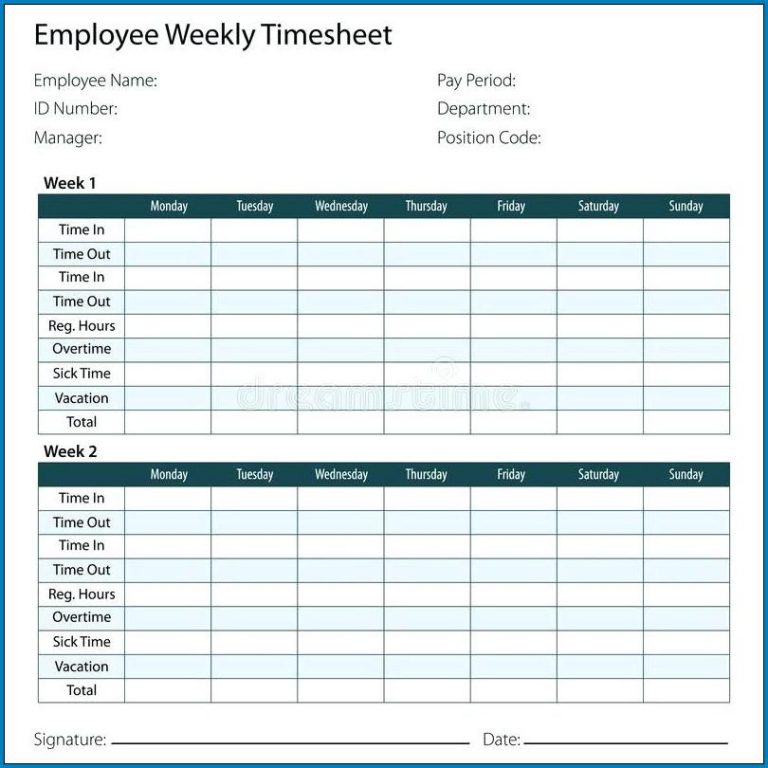
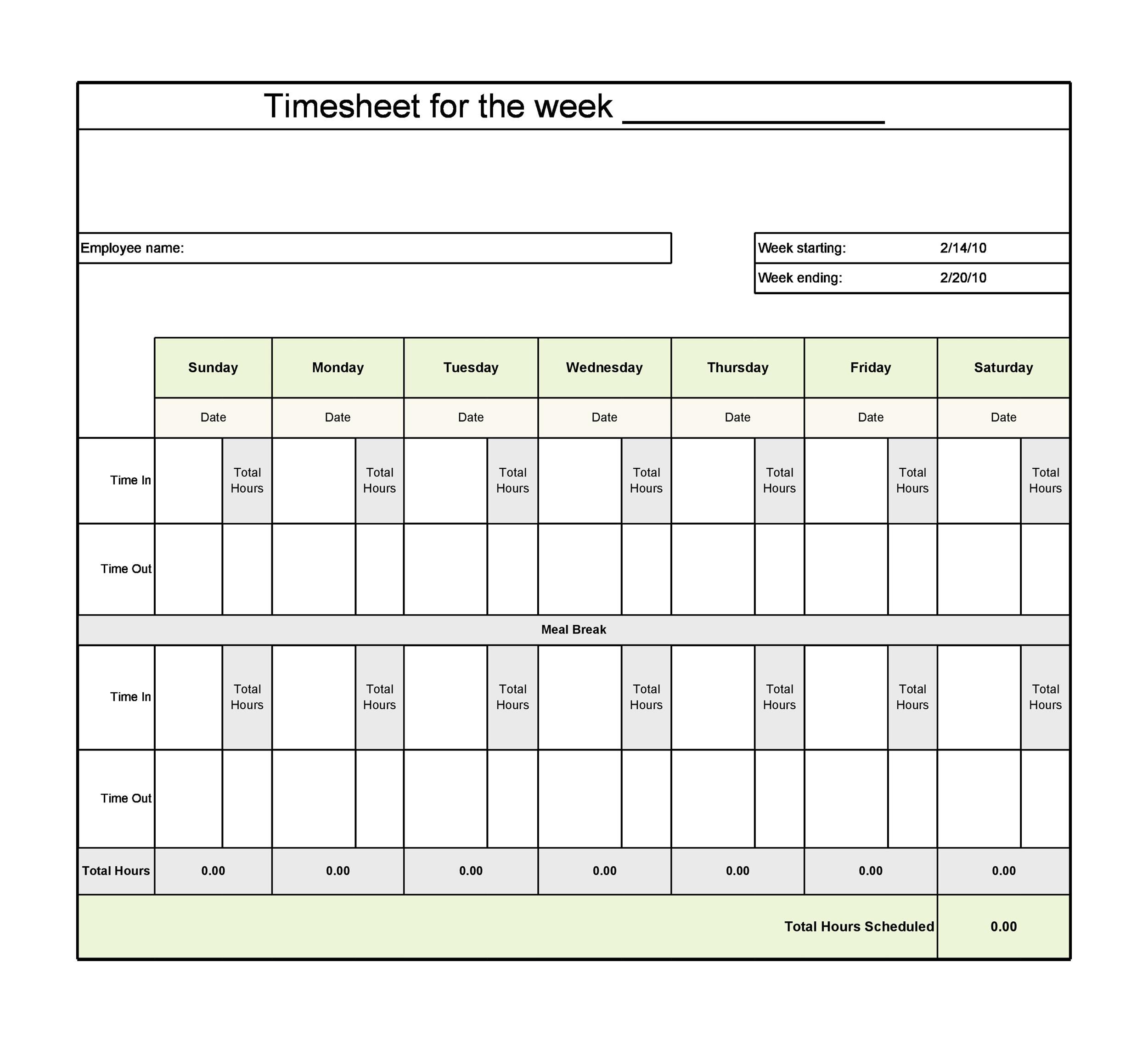
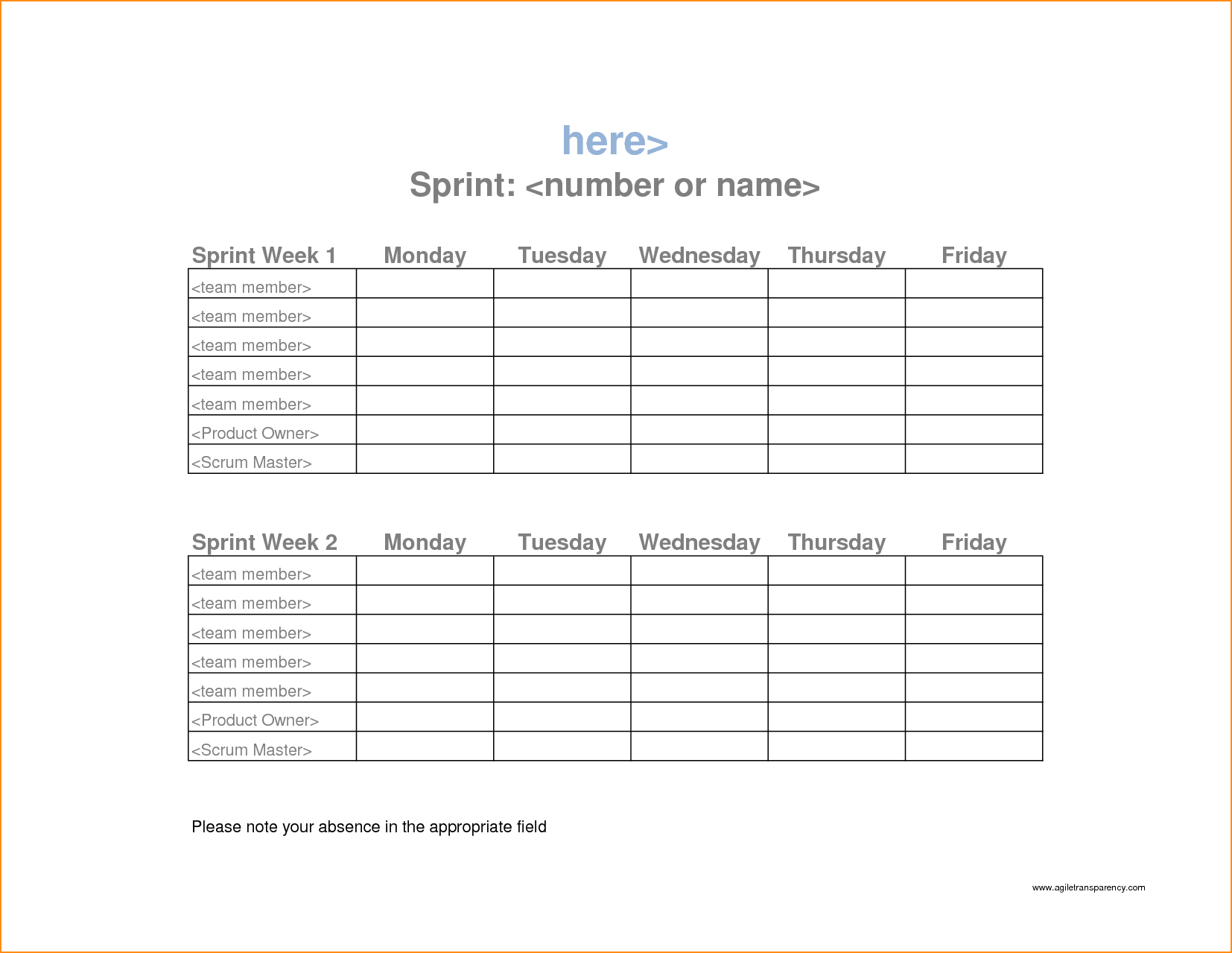
How to Create a 2-Week Timesheet
Creating a 2-week timesheet is relatively straightforward. Here are the steps you can follow:
- Choose a Template: There are many free templates available online that you can use as a starting point for your 2-week timesheet. Look for one that suits your needs and download it.
- Add Relevant Information: Customize the template by adding your company’s name, logo, and any other relevant information such as employee names and job titles.
- Create Columns: Add columns for each day of the two weeks, as well as any additional columns for overtime or other categories you need to track.
- Format the Timesheet: Make sure the timesheet is easy to read and navigate by using clear headings, formatting the cells, and adding any necessary formulas for calculating totals.
- Distribute and Collect: Share the timesheet with your employees and instruct them on how to fill it out. Set a deadline for them to submit their completed timesheets.
- Review and Approve: Once the timesheets have been submitted, review them for accuracy and approve them for payroll processing.
Conclusion
A 2-week timesheet can be a valuable tool for businesses and employees alike. It provides an efficient way to track hours worked over a longer period, streamlines payroll processing, and helps ensure compliance with labor laws. By understanding how to create and use a 2-week timesheet, you can improve efficiency and accuracy in your time-tracking processes.
2-Week Timesheet Template Excel – Download
